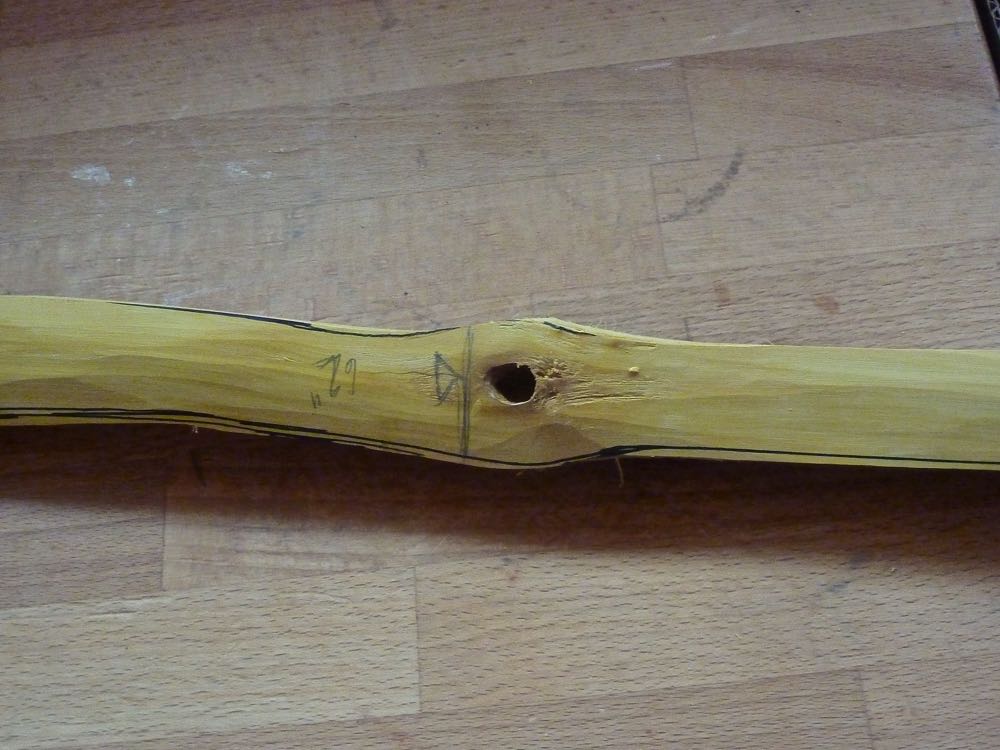A stave with every sort of imperfections in the beginning ….
– twisted 90°
– pronounced dogleg 30°
– abrupt reflex on the other limb 20°
– side kinks
– holes
– a kinda waist (from a big branch) at the bending part of one limb
that thing is 71“ long. My first thought was to avoid at least one hole at one side and another at an end by cutting off. I didn’t, instaed I cut off 2” of each end so now it is 67” long. I’m aiming for a (character, hahah) static recurve with 65” ntn.
Twist 90°

Dogleg and side kink

Reflex on one limb

Some of the holes




Cut off 2 x 2”, the first 3 0r four rings are o. k . I hope I can get the second or at least the third

here’s a short cut of steps I did:
Recurves are steamed in.
Unfortunately they were not in line, missing angle about 30°. Also need for string alignment correction. I did these corrections all in one heating session.
Added reflex with dry heat.
I will wait a few days before tillering till the stave gets some humidity back. Time to chase a ring, an additional ring at the levers allows cutting the stringnock in the back and making the levers narrow.
Two days pause
The holes are carefully worked out. Not much width to play only little side work with the drawknife, carefully watching the grain and trying to get a bit of a taper outwards.
back upper limb

belly

back lower limb

belly

Depth: the knotholes shows particularly high crown on the back, I hollowed out the belly to get even thickness. First more or less even thickness along the limbs, then a few scrapes to get some taper. The further tillering is done in the middle of the belly, resulting in concave furrow. The developing two ridges give more stability (very narrow snakey stave). This is not a HLD bow, the belly don’t flatten out when the bow is drawn. This is only a different way of tillering the depth taper for more stability (twisting) and matching more with deep valleys at the knotholes.


I had another problem. I got that thing to brace. While drawing (est. about 16”) I heard the ‘tic’. Immediately unbracing and examining the back and the belly brought no visible cracks or injuries. I braced it again, drew it again to 16” – nothing happened. Continued drawing out to about 20” and I heard the second ‘tic’. Now I saw two lengthwise cracks at the waist (lower limb).

Obviously here is too much twisting stress concentrated. Perhaps I have too much spin induced at that wavy grain area while the first untwisting phase and the wood / grain wants now go back in the original shape.
This is what I did:
Filled the crack with thin super glue, wrapped with a soaked strong linen yarn, and coated the wet wrapping with TBIII. She has got a nice corsage at her waist.


Next continued tillering, only a few scrapes more and I call it done.
The finished bow is here!




